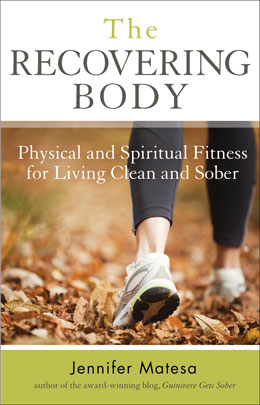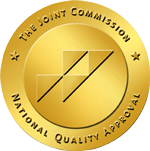
"The physical relief I felt just by practicing this mental discipline was unprecedented—even compared to the effects of drug use."

Other titles you may like.

Sex in Recovery:
A Meeting Between the Covers

A Kinder Voice:
Releasing Your Inner Critics with Mindfulness Slogans

Awakening Blackout Girl:
A Survivors Guide for Healing from Addiction and Sexual Trauma
Visit Recovery Road to view and
listen to all the episodes.
Episode 231 -- July 28, 2022
Awakening Change: Build your Meditation Muscle
Most of us avoid doing activities that are hard for us—or that seem hard before we start. If it is not instantly fun or rewarding, or if we feel that we are not good enough, we tend to stop trying and excuse ourselves with the classic, "It just wasn't for me." Some things aren't for us, of course, and that is completely okay. Some of us may have even thought that recovery wasn't for us once—it was too hard and not fun at all. But look at us now. We put in the work, and we are making it!
In her book The Recovering Body: Physical and Spiritual Fitness for Living Clean and Sober, Jennifer Matesa offers a guide to achieving physical recovery as part of our journey of lifelong sobriety. This book discusses how we can begin repairing the damage addiction did to our bodies as we set about rebuilding our lives in recovery.
In the following excerpt, we hear how Matesa learned to meditate after twenty years of on-again-off-again trying. Her story helps us realize that change can take time. We get good at what we practice, and the more we practice the easier it is to pick it up again after we have put it down. This excerpt encourages us to create a healthy new recovery habit that can awaken our bodies—and we also pick up tips on meditating along the way!
This excerpt has been edited for brevity.
Awakening the Body: Meditation and Awareness
I was maybe a week clean and bitching to my online sober pals about how tired I was and how lousy I felt when one of my new forum friends suggested I meditate. Janice, a former high-fashion model and heroin addict, now a softball-playing Jersey shore mom—a woman with long-term recovery whose calm online voice pierced through my sick self-pity and craving for approval—encouraged me to sit for two minutes per day. God almighty, I thought, what the hell is two minutes a day going to do for me? I was used to Taking Something that packed a quick, powerful load against my fear and loathing and physical fatigue. Two minutes sounded pitiful and frankly useless. But I was tempted: Janice herself was spending part of her Saturdays sitting at a zendo, a Zen meditation center, for more than an hour. Because I wanted what Janice had (I still, in fact, want what Janice has), I tried what she suggested.
I have tried a lot of meditation methods and gear during the past twenty-odd years. I've tried cushions, benches, and chairs. I've tried sitting cross-legged, kneeling, lying down, and walking. They all have some commonalities, I now realize. Janice gave me simple instructions. "I meditate every morning, as soon as my son gets on the bus for school," she wrote. "I bought a meditation cushion, and I sit. I stare at the wall, eyes half open. My sponsor had me begin at two minutes in the morning and two minutes at night, on a timer. Two minutes seemed like two hours. My mind raced, I was uncomfortable, but I did it. In doing, we succeed." We get good at what we practice.
I did what Janice told me to do. I had sat in meditation before, but doing it chemical-free made me understand in an entirely new way how much the act of sitting in meditation is a physical practice. We may think of meditation as a mental exercise that happens inside our skulls, but it requires me to sit my body still. I have to pay attention to the breath that moves in and out of my lungs, apparently beyond my will: I can try to exert my will over my lungs, I can hold my breath until I'm blue in the face, but I can't suffocate myself. I'll pass out, my body will save me, that's how powerful Homo sapiens' urge is toward healing and life.
My back hurt, my shoulders hurt, I felt dumb just sitting there, I couldn't stop my thoughts. I also felt fat: my breath made my belly bloom outward and, despite the fact that I was alone, the fear rose that someone would see me and think I was fat. Unbelievable vanity. My mind ran around like a rat in a stairwell. I wanted to check the timer. I decided I was a failure because I couldn't stop my mind from thinking.
A lot of people feel this way when they practice meditation. Or when they think about practicing meditation.
"I think a lot about meditating," Arielle, the Seattle cyclist and mountain climber, says. "I have this app, so maybe I do it for a week and then I don't do it for a month. My sponsor does it for thirty minutes a day, but I feel like I don't have enough time to sit still for five minutes!" She laughs at the irony. "I also feel, when I'm in meditation, like I'm a failure when I'm thinking of other things, which is probably 99 percent of the time. I don't like not feeling good at something that seems like it should be easy."
Because I had told Janice I would try, I kept trying. Practicing according to Janice's instructions, after a few days I was surprised: I could feel my mind letting certain thoughts just slip away without panicking. It was as though a fine layer of Teflon coating had been sprayed onto the surfaces of my mind. Eventually, during meditation, I began to feel as though I were sitting in a kayak on a calm pond, with all my thoughts written on the surface of the water, and I watched as they passed by my boat, untouched. I was tempted to reach out and touch them, but I chose to keep my hands inside the boat, on my thighs, where Janice had told me to put them. The physical relief I felt just by practicing this mental discipline was unprecedented—even compared to the effects of drug use. Because when I was using drugs, they always ran out. But this practice was a renewable resource. I could choose what to think, and thereby choose what my body would do—and what it would not do.
Just like exercise, nutrition, and sleep, though, meditation has been an on-and-off practice for me. When I practice it, I get better at it. When I stop, the muscle weakens. But practice built on good early instruction develops muscle memory and healing, what Britton would call "neural networks" and "neuroplasticity." So as with tennis, the more I practice, the easier it is to pick up again after I've put it down.
About the Author:
Jennifer Matesa has written about health and life transformation for more than twenty years, including two previously published books, Navel-Gazing: The Days and Nights of a Mother in the Making, chosen by Lamaze International as a Top-Ten pregnancy and childbirth resource, and Knowing Stephanie, a biography of a young breast cancer patient. In 2010 she established the popular blog Guinevere Gets Sober, for which she has interviewed many scientists, practitioners, authors, and ordinary folks with fascinating stories about recovering from addiction.
© 2014 by Jennifer Matesa
All rights reserved

